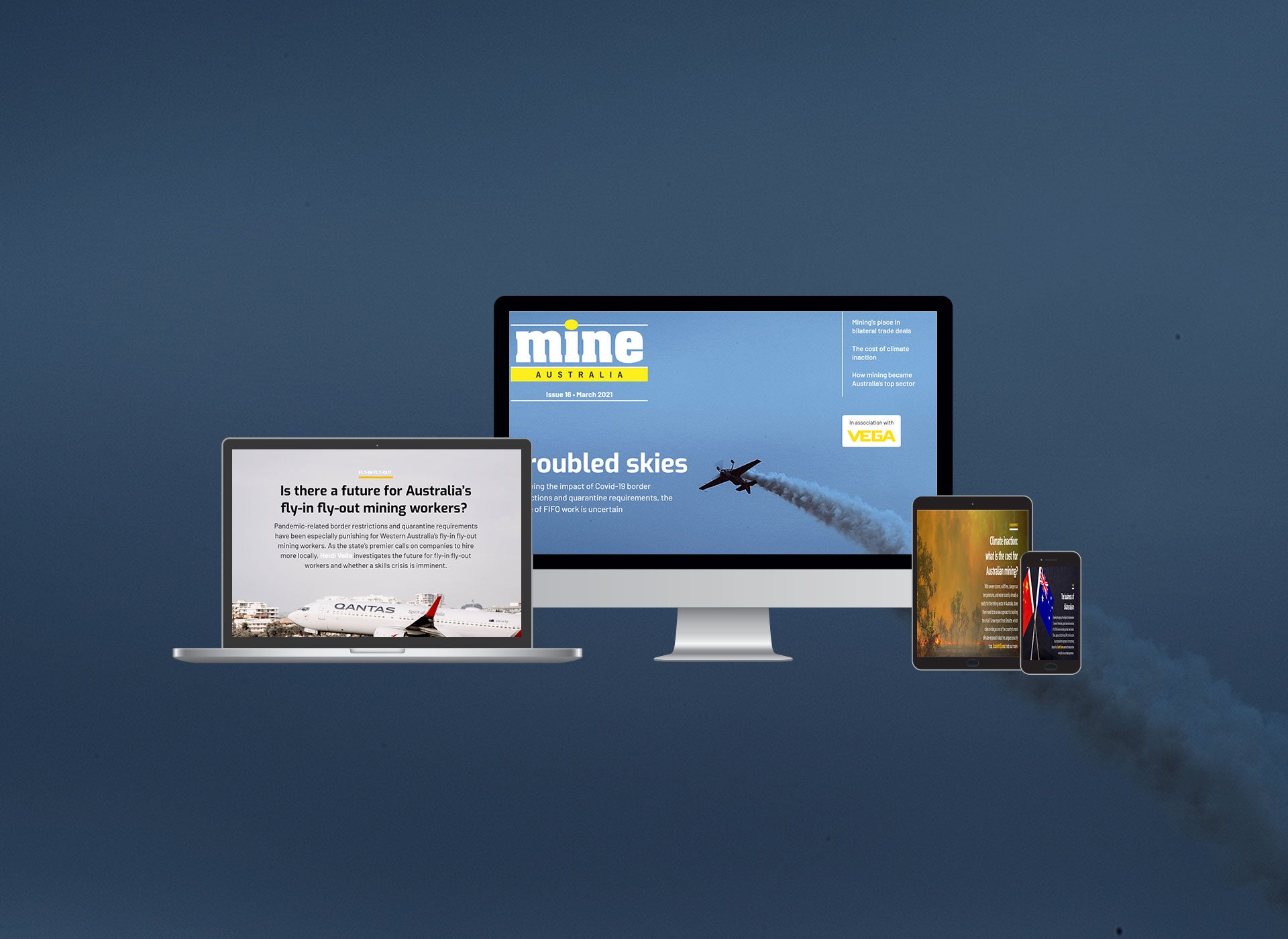
Western Australia’s fly-in fly-out workers have been integral to maintaining mining production in the state during the peak of the pandemic. However, nearly a year on, stories are emerging of the personal sacrifices some miners have had to endure due to strict restrictions at the border. With lockdown impositions described as ‘house arrest’ by some, we ask if the disruption seen in 2020 will affect on this mode of work in future? And will it deter new entrants to the industry?
Also, following the signing of the Regional Comprehensive Economic Partnership, a giant trade deal consisting of 15 ASEAN nations including Australia, New Zealand, China, Japan, and South Korea, BHP’s chief executive has emphasised the importance of strengthening bilateral ties. We examine the deal and how mining fits into such trade agreements.
Elsewhere, with Australia sitting on the frontlines of the global climate crisis, the mining industry is facing increasing risks from its exposure to global warming. As climate risks are already a reality for the mining sector in Australia, does there need to be a new approach to tackling the crisis and reducing operational risk? A new report from Deloitte, which cites mining as one of the country’s most climate-exposed industries, argues exactly that.
Whether you are on a desktop, tablet or smartphone, you can read the magazine for free online, and join the conversation on Twitter.

In this issue
Is there a future for Australia’s fly-in fly-out mining workers?
Pandemic-related border restrictions and quarantine requirements have been especially punishing for Western Australia’s fly-in fly-out mining workers. As the state’s premier calls on companies to hire more locally, Heidi Vella investigates the future for fly-in fly-out workers and whether a skills crisis is imminent.

The life and times of Australia’s unlikely Argyle diamond mine
After 37 years, the Argyle Diamond mine in the Kimberley region of Western Australia has closed its doors. Speaking at the time, Rio Tinto copper and diamonds chief executive Arnaud Soirat said: “Fifty years ago there were very few people who believed there were diamonds in Australia.” So how did the Argyle story unfold? Yoana Cholteeva tracks the history of this ground-breaking mine.

Data science: Australian mining’s new hammer and axe?
Australia’s Government and the mining sector are pushing to attract the next generation of data scientists to the mining industry to help maintain Australia’s status as a leader in mining innovation. Matthew Hall takes a look at the burgeoning role for data scientists in the mining sector.

Australia cashes in on cobalt
Australia’s cobalt mining sector is expected to register positive growth in 2021, with strong reserves and a significant project pipeline. Here, Scarlett Evans speaks with Cobalt Blue about the company’s mission to create a completely environmentally friendly cobalt project, and what’s previously stopped Australia from forging ahead in the industry.

The business of bilateralism
Following the signing of the Regional Comprehensive Economic Partnership, a giant trade deal consisting of 15 ASEAN nations including Australia, New Zealand, China, Japan, and South Korea, BHP’s chief executive has emphasised the importance of strengthening bilateral ties. Scarlett Evans examines the deal and how mining fits into such trade agreements.

Climate inaction: what is the cost for Australian mining?
With severe storms, wildfires, dangerous temperatures, and water scarcity already a reality for the mining sector in Australia, does there need to be a new approach to tackling the crisis? A new report from Deloitte, which cites mining as one of the country’s most climate-exposed industries, argues exactly that. Scarlett Evans finds out more.

From Adani to Bravus: what’s in a rebrand?
The Adani Group has rebranded its Australian business, which is responsible for the development of the controversial Carmichael coal mine in Queensland, to Bravus Mining & Resources. JP Casey investigates whether the publicity project could help turn public opinion back in the miner’s favour.

How mining came to be Australia’s most profitable sector
Mining remains Australia’s single largest sector, and a bastion of stability and profitability amid the uncertain times of the Covid-19 pandemic. JP Casey investigates the statistics behind the industry’s recent meteoric rise to see how it has secured such a position of dominance and stability.

Preview – MINE Australia May
When NASA’s Perseverance rover touched down on Mars, it did so with a 3.5-billion-year-old ultramafic dunite magnesium-rich rock from the Pilbara region in tow. The rock will be used to calibrate instruments before NASA collects samples of intact rock cores from an ancient river that flowed 3.5 billion years ago in Mars. We take a look at the science behind it.
Also in this issue, we dive into what Australia’s resources sector strategy means for miners as it looks to invest further into education and training and learn about the deployment of four autonomous light vehicles at Fortescue’s Christmas Creek mine.
Plus, we ask whether China has turned its back on Australian coal, investigate why the Pentagon is investing in Australian rare earths following the bankrolling of Lynas’ refinery, and take a look at a small town that previously got its power from the Ranger uranium mine’s diesel generators and will now be the site of a hybrid renewable project.



